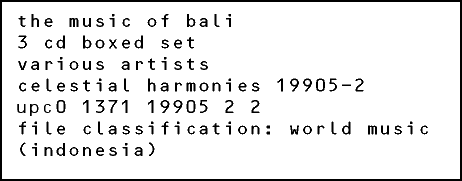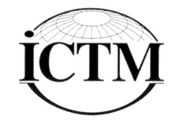 |
||||||||||||||||||||
 
the projectThe Music of Bali is produced by the highly acclaimed New Zealand composer/musician/producer David Parsons. Much like the other traditional/lost arts replications he has produced, The Music of Cambodia (19902), The Music of Vietnam (19903) and The Music of Armenia (19909), this collection is an opened time capsule of music from the isles of paradise. Jegog as heard on The Music of Bali, Volume One: Jegog (13136) is played predominantly for entertainment although it occasionally accompanies religious ceremonies. The ensemble has a total range of five octaves, requiring up to twenty musicians making up the two main instrument groups—the core melody instruments and elaborating instruments. The core melody is played on several lower octave instruments. Gamelan gong kebyar which is featured on The Music of Bali, Volume Two: Legong Gamelan (13137) was first heard in 1914 and spread rapidly throughout Bali. Kebyar music is characterized by a vibrant dynamic quality produced through strong rhythmic accents and sudden shifts in dynamics, tempo, and mood. Tirta Sari, comprised of musicans and dancers, specializes in the performance of gamelan music combined with Legong dance—specifically the famous dance of the divine nymphs. Featured on The Music of Bali, Volume Three: Kecak & Tektekan (13138), Kecak is derived from the sound cak (pronounced chok) which is chanted in complex interlocking patterns similar to the patterns played on the gamelan. The chorus of chanting men has evolved into a hundred or more chanters/dancers, in a sitting position in concentric circles. Tektekan was used traditionally to chase away malevolent spirits which were responsible for bringing disaster. Today the performance may be performed in ritual as well as secular contexts. the artistsDigitally recorded on location in two Balinese temples near Ubud, Bali, this three-CD collection is a rare offering of four unique styles of Balinese music from the famous isles of paradise, Indonesia. In Volume One, the highly acclaimed Swara Cipta Priyanti ensemble, associated with west Bali where the bamboo grows to enormous size, superbly replicates Bali's traditional Jegog music featuring four–tone bamboo instruments. Principal musicians of the ensemble are Gusti Wiarta, Nyoman Urip, Made Japa, and Wayan Tirta. The Tirta Sari ensemble on Volume Two, combines traditional gamelan and Bali's present–day popular gamelan gong kebyar musical styles with the legendary Legong dances. The principal musicians of the ensemble are Tjok Alit Hendrawan, Anak Agung Oka Dalam, Wayan Kopi, Ketut Madra, Tjok Bagus and Wayan Subrata. Volume Three, completes the series with a double treat of ritualistic music. Kecak, performed by the Tojan ensemble, is a style of Balinese vocal music performed by a large group of male chanters. Principal musicians of the ensemble are Gusti Bawa, Nyoman Sarma and Wayan Jiwa. Tektekan, performed by the Rama Budaya ensemble is a musical processional style used in exorcistic rituals. Principal musicians of the ensemble are Wayan Wija, Made Ladra and Ketut Sena. Celestial Harmonies' catalogue of Indonesian recordings includes:
|
||||||||||||||||||||
|
|
||||||||||||||||||||
 |



